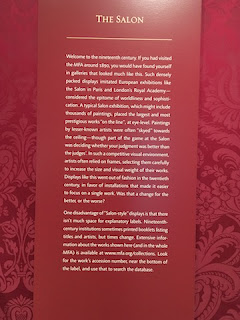
Last
March marked the 10th anniversary of my mother’s death. Her short life
was difficult, and she was, too; still, I was devoted to her.
Inconsolable losses eventually take the form of ordinary pains, like
joints that ache when a storm is coming, but sometimes I’m caught by
surprise. This year, feeling stranded in my grief and sadness made for a
long winter and a hard spring.
Even
as the days lengthened, I felt unreachable. It was as if I’d waited for
a tide that, commanded by some physics of loneliness, pulled away
before it could even reach the shore. It occurred to me one morning in
April that I might want to visit the Rothko Chapel — you know, someday.
Then it occurred to me, a little wildly, to just go. Right then. Twelve
hours later, I was in Houston.
The
chapel is both a nondenominational place of worship and a site-specific
artwork, an installation of 14 canvases by the Abstract Expressionist
painter Mark Rothko. In 1964, the Houston art collectors and patrons
John and Dominique de Menil commissioned Rothko’s work for the interior
of a space to be designed by the architect Philip Johnson. (When Johnson
clashed with Rothko, the project was turned over to the Houston
architects Howard Barnstone and Eugene Aubry.) The de Menils, observant
Catholics, were influenced by their friend the Rev. Marie-Alain
Couturier, who believed that modern artists could reinvigorate sacred
art. The chapel, which opened in 1971, sits next to the campus of the
Menil Collection, the museum that now houses the couple’s art. It has
been open to the public nearly every day since.
Rothko’s
canvases are studies in color relationships, assemblages of two or
three rectangular blocks set against a contrasting field. But he chafed
at the label ‘‘abstractionist.’’ The subjects of his paintings, he said,
were ‘‘basic human emotions,’’ expressed in the color values he wrested
from layered pigment. The results are visceral, charged, provocative.
It’s rare to be unmoved by them, whether to rage or joy. Despite, or
because of, their simplicity, Rothko’s paintings have been known to
bring viewers to tears. Rothko was proud of that; it was a sign of his
success. I wanted very badly to be moved.
Whims
beget surprises. When I arrived, I found out that I had envisioned the
wrong thing, the wrong kind of place, entirely. These canvases are
nothing like his more luminous color studies, paintings so full of depth
and light that it almost feels as if you can enter. The Houston
canvases are dark purples, maroons, black: the colors of old sorrows or
ageless ones. I had wanted something I could disappear inside, but these
colors seemed to come from inside me. According to James Breslin’s
biography of Rothko, he set out to paint something difficult to look at.



































































